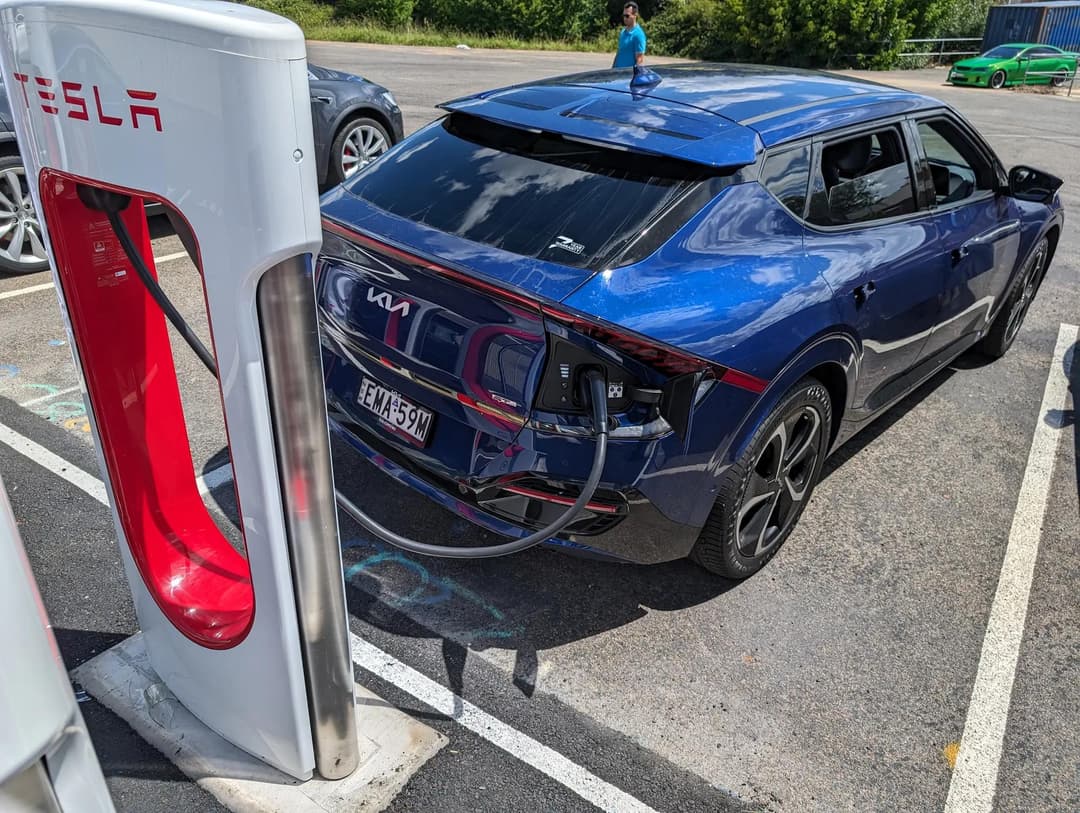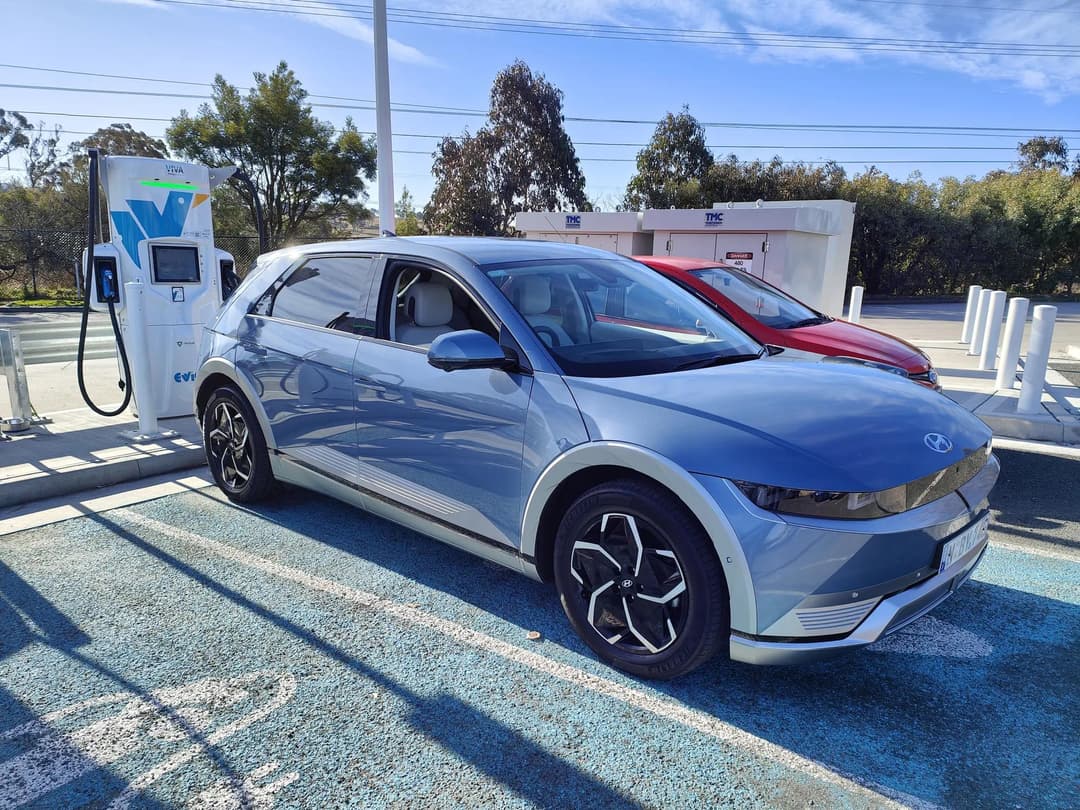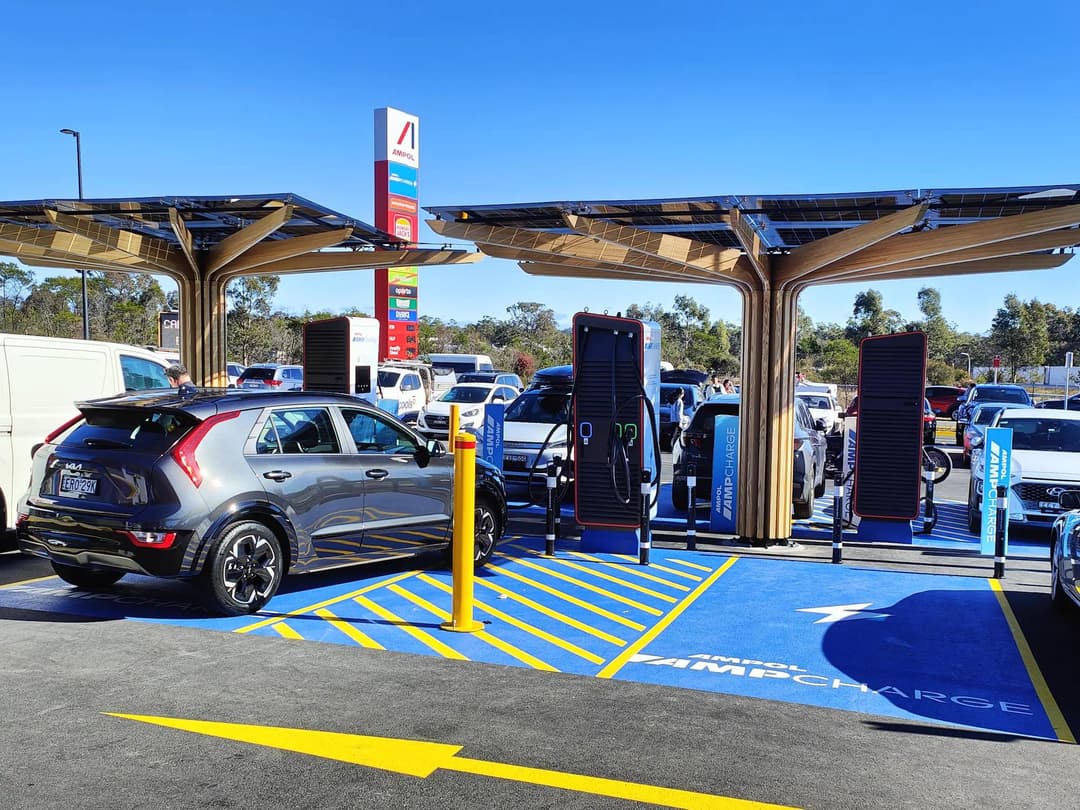$54 million Stage 3 of NSW government grant funding is now available for constructing EV fast charging stations across 140 regional and metropolitan NSW priority zones.
▶️MORE: Best EV charging networks in Australia
Thankfully none of the newly funded fast charging sites will be single 50kW locations such as those common across Victoria (Evie) and NSW (NRMA).
A number of zones with funding already allocated to build a charging station have been reopened to allow the funding of a second station. These zone ‘re-openings’ have been determined based on future high charging demand. The zones include Dubbo, Tamworth, Bathurst, Singleton, Coolongolook and Queanbeyan.
At a minimum newly funded Round 3 locations (depending on whether they are city or country) will be at 2 chargers to service 4 bays, with a minimum charge rate of 150-175kW kW for at least 2 of the charge bays.
Interestingly the grant guidelines state that while NSW Government funding allocated for this round is $54 million (AUD), it may be increased or decreased at the discretion of the NSW Government. The grant is administered as an open, competitive single stage program. The funding round will be open for applications for a total of 14 weeks, followed by a 9 week assessment period and then 5 weeks for contract signing.
Fast-track stations must be operational within 18 months of the execution of a funding agreement with the NSW Government, whereas all other stations must be operational within 2 years.
Funding begins with 20% payment upon signing of funding agreement, acceptance of project documentation and approval of charging station locations.
Further payments are staggered as more of a companies approved charging stations are operational and open to the public with final two lots of 5% funding handed over after 1 year and 2 years respectively of all chargers promised by a company being operational and all data and knowledge sharing activities have been completed.

Grant Rules of Interest
Standard Metropolitan, Standard Regional and Remote Regional stream stations must include at least one 22 kW AC redundancy charger in stations of less than 6 bays, which is an excellent idea.
Fast-track stream station locations do not need to have any 22 kW AC redundancy chargers, this is disappointing.
In news that will please 99% of Australian EV drivers each funded location will be majority Combined Charging System (CCS) connectors, with an option for 1 CHAdeMO connector at each charging station.
All installed chargers have to be Open Charge Point Protocol (OCPP) 1.6J compatible. For those chargers installed after June 2025, they must be OCPP 2.0.1 capable.
There must be a dedicated credit card reader per charging bay, per charger, or alternatively, a credit card payment terminal that services all bays at a station. Payment options must not be restricted by any form of business-related prioritisation, such as memberships, subscriptions or smartphone applications
There must be at least one charging bay for use by people with a disability at each station. The accessible bay(s) must be designed according to the RAA design guidelines for accessible EV charging stations.
Charging stations must be accessible daily with minimum hours of availability between 6:00 am – 9:00 pm
No other fees from co-located businesses can be asked of drivers to access a location (such as a shopping centre carpark fee).
Display charging unit’s price clearly in cost per kilowatt hour (charging unit pricing) and/or cents per minute (dwell time) without the payee using a mobile device to access the pricing. This pricing may be expressed via digital or physical signage or a combination, either on or within reasonable proximity to the charger.
Each charging station must achieve a minimum uptime of 98% each month for at least 50% of all plugs on site. Service outages caused by vandalism or force majeure events are excluded from uptime calculations. NSW Government may require successful grantees to report uptime and charger availability through a third-party service provider.

Grant Objectives
NSW Government's objectives for the grants are to reduce range anxiety by developing a broad, visible, and accessible fast charging network across the state. This includes ensuring that households in metropolitan areas with limited off-street parking have access to ultra-fast chargers within 5 km of their location.
To improve connectivity between metropolitan and regional areas, the government plans to create EV super highways across NSW. This will involve placing fast charging infrastructure at intervals no greater than 100 km along all major highways in the state.
Future-proofing the EV charging network is another key objective. The government intends to offer high-capacity chargers that are compatible with both current and future battery electric vehicles (BEVs) and plug-in hybrid vehicles (PHEVs), ensuring the network remains relevant beyond 2030.
To maximize grid support and reduce scope 2 emissions, the government is mandating that all charging sites must be powered entirely by renewable energy. They are also encouraging the use of on-site battery storage solutions to further support the grid and reduce environmental impact.
Finally, the government aims to ensure that their funding supports projects that would not have otherwise happened. This means using NSW Government co-funding to build additional charging stations, rather than supporting stations that would have been built anyway without government assistance. This approach aims to maximize the impact of public funds in expanding the EV charging network.

Changes compared to Round 2 of Grants
The funding conditions for Round 3 have undergone significant changes compared to previous rounds. The total available funding has been reduced from $80 million in Round 2 to $54 million in Round 3.
Additionally, the funding streams have been restructured and expanded. Round 3 now includes Standard metropolitan, Fast-track metropolitan, Standard regional, and Remote regional streams, each with its own funding cap.
The site funding caps have been adjusted for each stream. Standard metropolitan sites can receive up to $300,000, Fast-track metropolitan up to $450,000, Standard regional up to $550,000, and Remote regional up to $650,000.
This represents a change from the previous round's Standard and Fast-track categories, which had caps of $490,000 and $900,000 respectively.
The bid cap per applicant has been reduced from $30 million in Round 2 to $15 million in Round 3, potentially allowing for a more diverse range of applicants. The number of eligible zones for co-funding has also been significantly reduced, from 275 in previous rounds to 140 priority zones in Round 3. These zones include 125 unfunded zones and 15 reopened zones.
A new feature in Round 3 is the introduction of additional funding for pull-through bays. Stations that include at least one pull-through bay will be eligible for an extra $15,000 in funding, which was not available in previous rounds. This change aims to improve accessibility and convenience for towing electric vehicle users.
For more details visit the NSW Climate and Energy Action website.
About the author

Neerav Bhatt has been a technology journalist and photographer for over 20 years appearing in online, print, radio and TV media. His current focus is on helping Australians switch to electric vehicles as well as making their home fully electric, sustainable and climate resilient. Youtube: www.youtube.com/@NeeravBhatt Web: neeravbhatt.com
Stay up to date with the latest EV news
- Get the latest news and update
- New EV model releases
- Get money savings-deal

Privacy policy